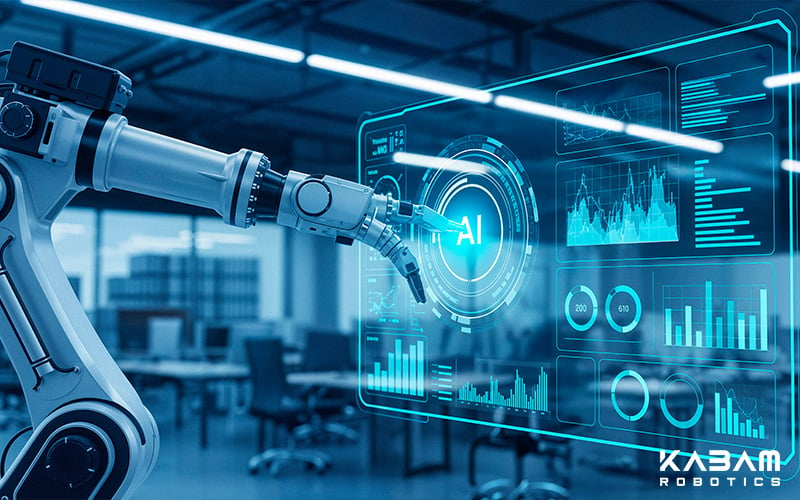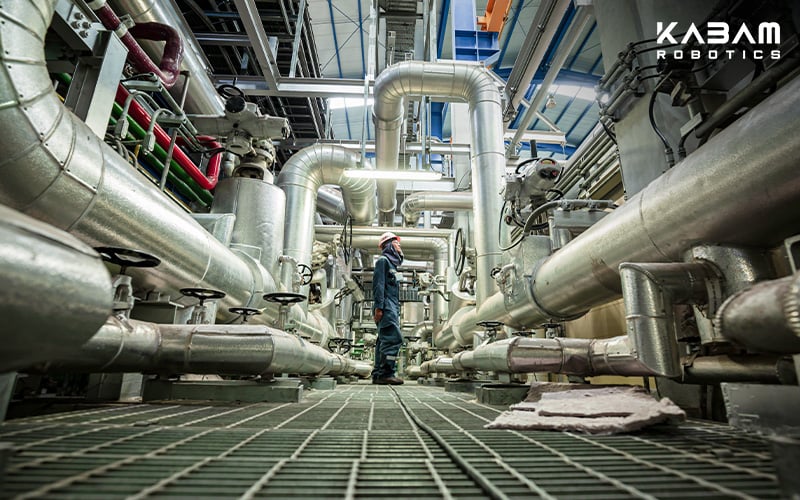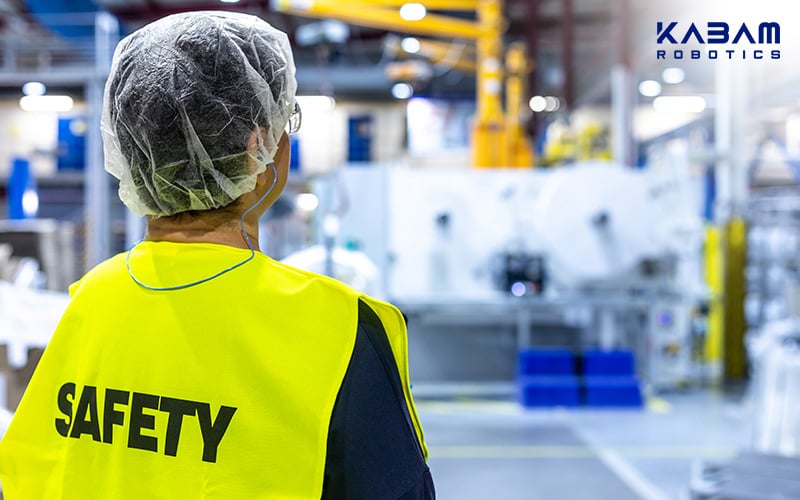Part 1: Introduction
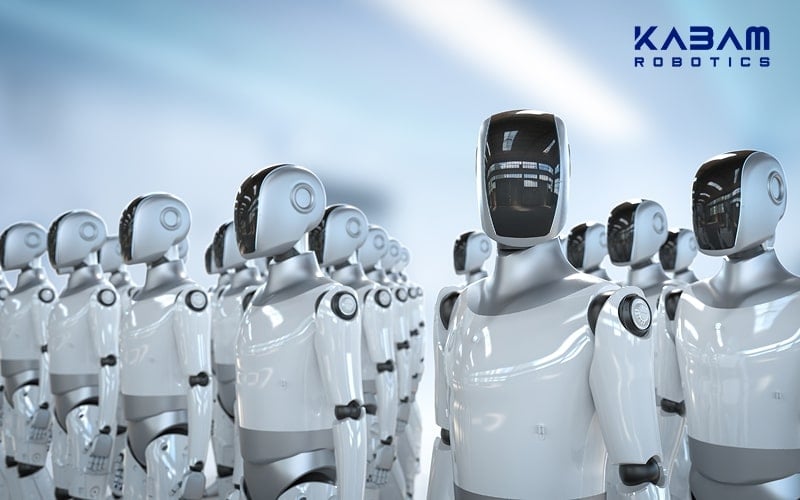
The future of robotics is rapidly transforming industries such as manufacturing, logistics, healthcare, and security, driving unprecedented levels of efficiency, safety, and innovation. Robots are increasingly capable of performing tasks once exclusive to humans, from automated warehouse management to real-time security patrols.
As businesses seek future-proof automation solutions, the demand for flexible and scalable robotic systems has never been higher. However, one major challenge remains: the seamless integration of multiple robotic brands and security systems into a unified operational framework. Traditional proprietary ecosystems limit businesses by tying them to specific vendors, making it difficult to adapt to evolving technologies.
This is where device-agnostic robotics platforms come into play. By enabling interoperability between various robotic systems, backend infrastructure, and security technologies, platforms like KABAM Robotics’ Smart+ provide a unified interface for managing a wide range of robotic fleets. This article explores how these solutions allow businesses in Singapore and beyond to optimise their automation strategies without being locked into a single brand or vendor.
Part 2: The Rise of Device-Agnostic Platforms in Robotics
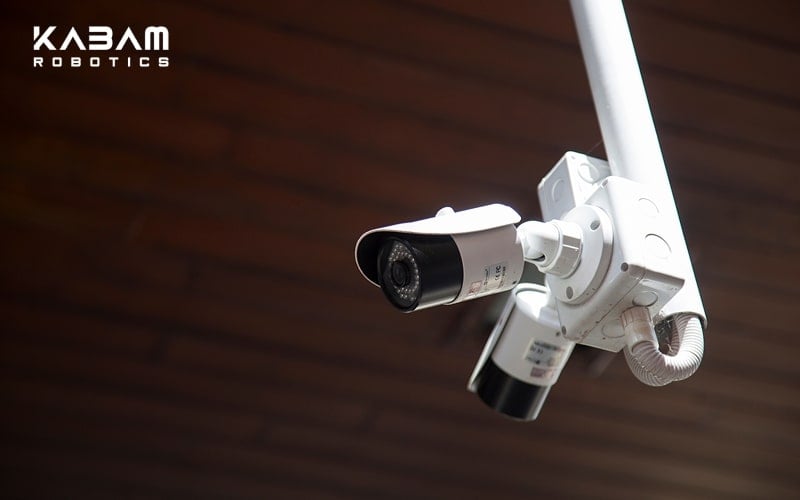
2.1. Definition of Device-Agnostic Platforms in Robotics
A device-agnostic robotics platform is a system designed to integrate and communicate with various robotic devices, security systems (such as CCTV and access control), backend systems (PSIM, VMS, CMMS), and building infrastructure (elevator integration). Unlike proprietary platforms that limit businesses to specific vendors, device-agnostic platforms provide a universal interface that allows different robots, security systems and building infrastructure to function seamlessly within a single ecosystem.
These platforms work by employing standardized communication protocols, middleware solutions, and open APIs, enabling interoperability between different robotic brands and existing digital infrastructures. This also means businesses can deploy robots from multiple manufacturers without worrying about compatibility issues, ensuring greater flexibility and scalability.
For industries such as security, facility management, logistics, and smart buildings, device-agnostic robotics platforms offer a game-changing solution. For example, a security operations centre can integrate robots from different brands alongside existing CCTV and access control systems, allowing a centralised platform to manage all security automation. In logistics, autonomous mobile robots (AMRs) from different manufacturers can work together in a warehouse, optimising inventory movement and streamlining workflows.
By eliminating vendor lock-in, these platforms maximize a company’s return on investment, allowing businesses to integrate new technologies without replacing their entire robotic fleet. As the future of robotics evolves, device-agnostic platforms ensure long-term adaptability, making it easier for businesses to stay competitive in a rapidly advancing technological landscape.
2.2. Evolution of Robotic Systems
How Multi-Brand Integration is Transforming the Robotics Landscape
The robotics industry has evolved significantly, moving from isolated, brand-specific systems to interoperable robotic systems that support multi-brand integration. This shift has been driven by the increasing demand for flexibility, efficiency, and scalability in industries such as security, facility management, and logistics.
1. Diverse Robotic Ecosystems
In the past, businesses relied on a single manufacturer for their robotic solutions, limiting their ability to customize operations. Today, multi-brand robot integration enables a diverse ecosystem where robots from different manufacturers work together, offering businesses a broader range of capabilities. For example, in smart buildings, cleaning robots from one brand can work alongside autonomous surveillance robots from another, ensuring comprehensive facility management.
2. Increased Collaboration
The rise of collaborative robotic ecosystems has transformed how robots operate in shared environments. Through device-agnostic robotics platforms, robots can communicate, coordinate tasks, and optimize workflows, improving overall efficiency. In a large commercial facility, a patrol robot can collaborate with drones and stationary cameras to enhance security, ensuring real-time threat detection and response.
3. Simplified Management
Managing a mixed fleet of robots is now more straightforward with unified fleet management solutions. Businesses can monitor and control all robotic assets through a single, centralised platform, reducing operational complexity. This simplifies maintenance, streamlines troubleshooting, and enhances overall system reliability.
As the future of robotics moves towards seamless integration, businesses that adopt multi-brand ecosystems will gain a competitive advantage, improving automation efficiency and long-term sustainability.
2.3. Key Benefits of Device-Agnostic Platforms
The adoption of device-agnostic platforms is transforming industries by enabling seamless integration of robots from multiple manufacturers. Businesses that implement these platforms gain several key advantages, such as greater flexibility, cost efficiency, and long-term scalability.
1. Increased Flexibility
Traditional robotic systems often require businesses to commit to a single vendor, limiting their options. With interoperable robotic systems, companies can choose the best robots for specific tasks, ensuring they meet operational needs without worrying about compatibility issues. For example, in security operations, a patrol robot from one brand can work alongside drones or stationary surveillance systems from another, creating a more effective security ecosystem.
2. Cost Efficiency
Switching to a single-brand robotic system can be costly, especially when businesses have already invested in various robotic solutions. Multi-brand robot integration allows companies to leverage their existing infrastructure without unnecessary replacements, reducing costs while maximising operational efficiency.
3. Future-Proofing
As technology evolves, businesses must stay adaptable. Future-proof automation solutions ensure seamless adoption of new robotic technologies without overhauling entire systems. With a flexible, unified fleet management approach, companies can scale their automation efforts while staying ahead of industry advancements.
By embracing collaborative robotic ecosystems, businesses in Singapore and beyond can enhance automation, improve efficiency, and remain competitive in the future of robotics.
Part 3: Overview of Multi-Brand Robot Integration

3.1. Maximizing Efficiency and Innovation with Multi-Brand Robot Integration
The adoption of multi-brand robot integration allows different robotic systems to work together seamlessly. By leveraging device-agnostic robotics platforms, businesses can optimize efficiency, enhance innovation, and streamline operations across various sectors, including security, logistics, and facility management.
1. Greater Operational Efficiency
A unified fleet management approach enables businesses to monitor and control all robots from a central platform. This eliminates the need for multiple control systems, reducing human error and improving overall workflow. Companies in Singapore’s smart buildings and commercial properties, for example, can integrate autonomous cleaning robots with autonomous surveillance robots to enhance both maintenance and security.
2. Enhanced Functionality and Innovation
With interoperable robotic systems, businesses can combine the strengths of robots from different brands. A security company can deploy a patrol robot for routine surveillance while integrating drones or AI-powered sensors for advanced threat detection. This fosters innovation, as businesses are no longer restricted to a single vendor’s capabilities.
3. Seamless Communication and Collaboration
A collaborative robotic ecosystem ensures smooth coordination between robots. Standardized protocols and APIs facilitate interoperability, allowing robots to share data and operate more effectively. Real-time communication between security robots, building automation systems, and monitoring platforms enhances response times and situational awareness.
By embracing future-proof automation solutions, businesses in Singapore and beyond can improve operational efficiency, reduce costs, and drive continuous innovation, allowing them to maximize the benefits brought about by the future of robotics.
3.2. Overcoming Challenges in Multi-Brand Integration
Multi-brand robot integration represents the future of robotics, offering various significant advantages. However, it also presents certain challenges that businesses must address to ensure seamless operations. The good news is that companies can utilize device-agnostic robotics platforms to overcome these hurdles and maximize the potential of a diverse robotic fleet.
1. Data Compatibility and System Updates
One of the most significant obstacles to integrating robots from different manufacturers is ensuring data compatibility. Each brand often uses different data formats or software versions, which can lead to integration issues. To resolve this, businesses can implement standardized data protocols and use middleware or custom APIs to facilitate smooth data exchange. Additionally, regular system updates and synchronization are crucial to ensure that all robotic systems remain compatible and function in harmony. In Singapore’s rapidly evolving sectors like security and manufacturing, it is essential for businesses to stay ahead of these compatibility challenges to maintain efficient operations.
2. Security and Cybersecurity Concerns
The advancement of the future of robotics comes with greater reliance on robots, and as more robots are integrated into critical systems, cybersecurity becomes a top priority. With robots operating across various brands, the risk of vulnerabilities increases, especially in sectors like surveillance and facility management. To mitigate this, businesses must implement stringent security measures such as encryption, firewalls, and intrusion detection systems. KABAM Robotics ensures that all its solutions meet the highest security standards, with ISO/IEC 27001 certification and the CSA Cyber Trust Mark, providing peace of mind for businesses.
By addressing data compatibility issues and focusing on stringent security protocols, businesses can overcome integration challenges and enhance their robotic ecosystems, ultimately driving growth and innovation across industries.
Part 4: The Future of Robotics: Advancements in Device-Agnostic Platforms
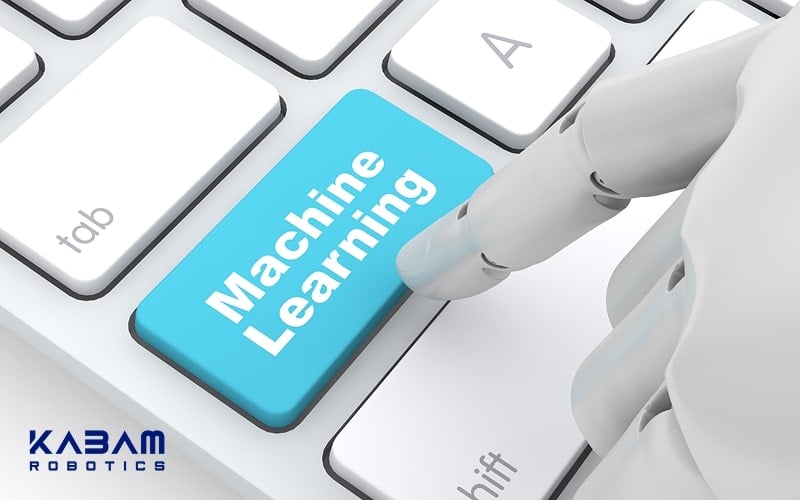
4.1. AI and Machine Learning Integration
The future of robotics will heavily rely on artificial intelligence (AI) and machine learning to enhance the capabilities of device-agnostic robotics platforms. As robots become more intelligent, they will be able to make autonomous decisions, adapt to dynamic environments, and collaborate more efficiently, driving significant advancements in multi-brand robot integration.
AI and machine learning will allow robots to continuously learn from their experiences, refining their operations over time. This means that even as multi-brand robot systems evolve, these AI-enhanced platforms will ensure that robots from different manufacturers can communicate and operate seamlessly. For instance, through AI-enhanced robotics integration, robots will be able to coordinate tasks autonomously, improving the overall efficiency of operations in complex environments such as smart buildings and industrial facilities.
Moreover, the integration of AI will facilitate real-time decision-making, enabling robots to identify and respond to changes in their environment with minimal human intervention. This will encourage the creation of collaborative robotic ecosystems, where robots work together in real-time, enhancing operational efficiency across various sectors like logistics, healthcare, and security.
Ultimately, AI and machine learning integration will make future robotics solutions more intelligent, adaptable, and efficient, ensuring that businesses can scale their operations whilst maintaining a high level of innovation and productivity.
4.2. The Path Forward for Businesses
As industries adapt to the future of robotics, businesses must embrace the benefits and challenges that come with it to remain competitive in the market. This includes the integration of device-agnostic platforms that enable companies to make use of the latest robotic innovations, future-proofing their operations for long-term success.
By choosing future-ready robotics solutions, businesses can easily upgrade and integrate emerging technologies without overhauling their entire robotic and operation ecosystem. This modern and open-minded approach enables them to adapt swiftly to market changes, improving both agility and efficiency.
Additionally, interoperable robotic systems allow companies to build versatile fleets that can adapt to various tasks. The ability to combine robots from different manufacturers without worrying about compatibility fosters a culture of innovation and prevents businesses from being limited to just one particular brand.
Investing in flexible, open-architecture systems will empower businesses to stay ahead of competitors whilst continuously enhancing their operations. As the industry progresses, businesses that prioritize adaptability and seamless integration stand a higher chance of achieving sustained growth and maintaining a competitive edge in the robotics sector. Embracing the future of robotics will set them up for success in a rapidly transforming market.
FAQs
1. How secure is multi-brand robot integration?
Multi-brand robot integration is an inevitability in the future of robotics. This is why leading robotics companies in Singapore like KABAM Robotics have invested heavily into creating platforms that support device-agnostic ecosystems. KABAM Robotics’ Smart+ platform, for instance, incorporates robust, ISO-certified cybersecurity measures to safeguard robotic systems against potential vulnerabilities and cyber threats. With encrypted communication protocols, Smart+ ensures secure data transmission between robots and connected systems. Regular security audits and system updates are also essential in maintaining a secure environment, protecting sensitive data, and preventing breaches. With a strict adherence to security standards and best industry practices, Smart+ protects multi-brand robotic systems, keeping them safe and secure from evolving cyber threats in different operational environments.
2. How can businesses benefit from multi-brand robot integration in security and facility management?
Businesses can significantly benefit from multi-brand robot integration, especially in security and facility management, by deploying a variety of autonomous robots for different tasks. Autonomous surveillance robots, for instance, can conduct regular patrols, while cleaning and maintenance robots ensure the upkeep of the premises. By integrating these robots, businesses can manage all systems through a single, unified fleet management platform, streamlining operations and reducing human error. This integration enhances efficiency, reduces costs, and allows for seamless coordination between different robots, leading to improved productivity and more effective facility management overall.
3. Can businesses integrate existing robots into a device-agnostic platform?
Yes, businesses can integrate existing robots into a device-agnostic platform, regardless of brand. These platforms are designed to accommodate different robotic systems, allowing businesses to maintain their current fleet whilst benefiting from the latest technological advancements. By using these platforms, businesses can now streamline operations without the need for costly replacements. This flexibility helps companies avoid the expense of overhauling their entire robotic system whilst still having the option to upgrade and expand as needed. With the rapid development of the future of robotics, this long-term efficiency and scalability is key to reaping the benefits of future breakthroughs in relevant technologies.
The future of robotics clearly lies in platforms that accommodate and allow seamless collaboration between different robot and security ecosystems. As industries continue to evolve, the ability to integrate robots across brands will become a critical factor in maintaining operational efficiency and adaptability.
As a leading robotics company in Singapore, KABAM Robotics provides cutting-edge robotics solutions that ensure seamless automation for businesses across various industries. From autonomous surveillance robots to patrol robots, KABAM’s Smart+ platform supports the integration of diverse robotic fleets, allowing your business to expand on and improve its robotic capabilities in the years to come.
For more information on our services, please contact us today.

